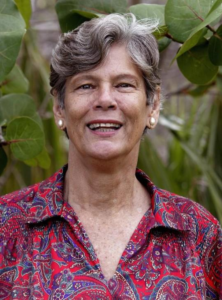By Maggy Hurchalla, environmental activist
Florida spent its first century destroying its wetlands and natural areas.
We were slow in understanding the consequences, but, at least in the scientific community, we now understand that every time we destroy more, we make the water quality worse.
Besides creating dirty water, we add to floods and drought. The natural wild places we destroyed held the water, cleaned the water, and released it slowly to feed our coastal estuaries.
Unlike reservoirs, the natural areas could expand and contract their shallow wetlands to get rid of excess water in wet years and hold onto water in dry years. They are the only projects in Everglades restoration that actually reduce the quantity of excess water flowing into our rivers.

Those things can’t be replicated by parking lots or stormwater treatment ponds or expensive retrofits of bad drainage systems. The damage can’t be corrected by requiring contributions to mitigation banks that don’t replace what is lost and are located somewhere else.
I served on the Governor’s Commission, which worked with the U.S. Army Corps of Engineers in the 1990s to create the Comprehensive Everglades Restoration Plan (CERP). The 50-odd members of that group were hardly a collection of rabid environmentalists. They included a bank president, the president of U.S. Sugar, politicians and a whole lot more business people than eco-freaks.
Working with hydrological computer models and state and federal biologists, the group concluded that “expansion of short hydroperiod wetlands” was one of the overriding goals of CERP. Benefits included saving South Florida’s wading birds and “getting the water right.”
A short hydroperiod wetland is what you see in an aerial photo of southwest Martin County. In the Palmar area from the sky it looks like a bunch of mud puddles. Those areas cannot be protected or expanded farther south because in Dade and Broward counties there are houses where they used to be.
The conclusions of CERP was that, if we could acquire and restore the areas that were impacted and over drained but undeveloped, we could get a windfall in terms of water storage and water quality while creating the habitat necessary for wading bird survival.
The Indian River Lagoon South component of CERP covers Martin and St. Lucie counties. CERP concluded that without both the reservoirs and the Natural Area acquisition and restoration in the plan, the St. Lucie Estuary would be irrevocably destroyed. The plan called for acquiring pasture lands around the existing Save Our Rivers projects in Martin County.
Restoration does not require massive construction. Simply plugging the ditches that over drained the property would allow nature to recreate the shallow wetlands habitat and pine palmetto prairie that once existed.
Without the Natural Area component, we would have to plan for, acquire land for, and build another 30,000 acre-foot reservoir and 3,000 acres of stormwater treatment areas. With it, we recreate 30,000 acres of shallow wetlands.
Previous Martin County commissions have been an important partner in acquiring 27,000 of the 57,000 acres of Natural Area designated for acquisition in our part of CERP pan to fix our estuary.
On Jan. 21, there was a ribbon cutting to celebrate completion of a portion of the Allapattah Natural Area restoration.
Like the rewinding of the Kissimmee River, we are celebrating putting back what we willfully destroyed. The natural world is working for us again.
Martin County helped make it happen.
It’s a happy day.
Hopefully it is also a useful lesson about a decent respect for creation.
A version of this op-ed first appeared in the Treasure Coast Newspapers and the Palm Beach Post.
Maggy Hurchalla is a Miami native, a former Martin County commissioner, and a member of the Everglades Hall of Fame.
“The Invading Sea” is the opinion arm of the Florida Climate Reporting Network, a collaborative of news organizations across the state focusing on the threats posed by the warming climate.



